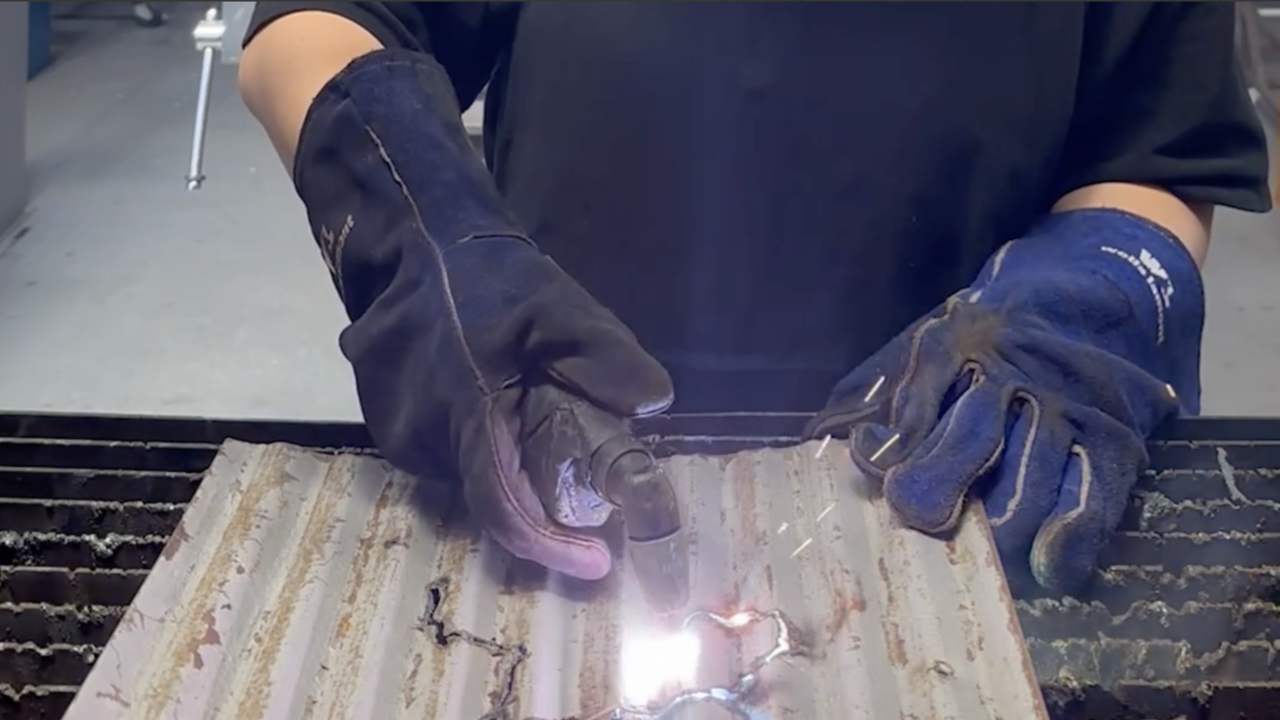Xavier Le Roy

Using only an elasticized black jumper and trousers as a tool for revealing and hiding sections of his body as it moves through a series of awkward folds and bends, French choreographer Xavier Le Roy transforms his physical form into an assemblage of unrecognizable parts in a work entitled Self-Unfinished (1998). ‘Retrospective’ at the Fundació Antoni Tàpies, an exhibition of selected solo works produced between 1994 and 2010, similarly sought to exercise the viewer’s mechanisms of recognition, of authorship, of the museum space and of the conventions of a retrospective exhibition.
As visitors entered the emptied exhibition hall, six performers dramatically ceased all activity to perform a cyborg greeting. Triggered by the arrival of every visitor (loosely co-ordinated into groups at reception), their robotic gestures and mimicking of the sounds of moving machinery suggested the swivel of an industrial kaleidoscopic camera. Dispersing and organizing themselves into a preconceived arrangement across the space, some returned to what they were doing before they were interrupted: stating the production dates of Le Roy’s solo works and performing them in chronological order at their own varied rhythms. Other performers collected visitors and engaged them in anecdotal history of their relationship to dance and the development of their artistic identity, each using Le Roy’s works and/or his biographical information as chronological anchors in their personal story.
While Le Roy has produced performances for a museum setting before (he has been performing Self-Unfinished, for example, in art museums and galleries since 2004), this was the first time a comprehensive collection of his work has been displayed. His strategies for approaching the retrospective framework were refreshingly self-evident. The telescoping of chronology and the intrusion of multiple biographies is a way of fragmenting the frame through which Le Roy’s body of work is perceived: he forms an aesthetic system that seeks the vision and experience of the spectator to edit the exhibition. Where many curators and artists have failed in offering an adequate system for the viewer to assume the demanding role of editor, Le Roy succeeds. I watched as children and adults moved between states of visible excitement and apprehension; we revelled in the freedom to explore the empty museum space, ask the performers questions, recount our own personal stories or offer our interpretations.
In a 2003 interview, Le Roy defined performance as: ‘A paradigm which indicates how society and social relations are continuously produced and reproduced through actions performed by every single individual; constantly anew but within certain rules.’ The productive elements of his exhibition were not so much unconventional as faithful to the nature of an art form which is rooted in a causal relationship between action and recognition, in which both performer and spectator are bound; or, as Elin Diamond wrote in Performance and Cultural Politics (1996), ‘a doing and a thing done’.
‘Retrospective’ can be read as a game, but – significantly – one with rules. The spontaneity of the performers’ individual interactions with the public was contained by a loyalty to the group choreography; marked by repetition, the fixed distribution of dancers across the space, their well-rehearsed personal narratives as well as the regulated nature of their greeting. Le Roy creates a playful exchange as both performer and spectator move freely between looking for, recognizing and inventing the rules of interaction and representation.
That is not to neglect that all play is serious. The 16 young local performers, working on an eight-hour shift rota for the duration of the exhibition, gained some useful skills for surviving in the culture sector. They were in control of their production, simultaneously autonomous and organized in networks; they were communicative, excellent hosts, enthusiastic and flexible, their stories professionally personalized, their artist CVs indistinguishable from their personal biographies. Le Roy’s game has remarkably similar rules to a society driven by the principles of what sociologists Luc Boltanski and Eve Chiapello called ‘the new spirit of capitalism’ in their 1999 eponymous publication. One of the lingering questions posed by ‘retrospective’ was: where is the current division between work and play?
















